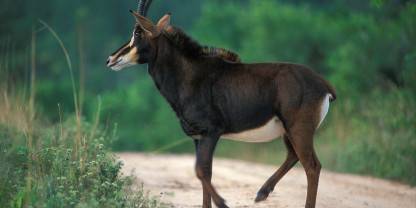Shimba Hills National Reserve is a key sanctuary for the . It is the only reserve in Kenya where this striking large antelope can be seen, and one of the last few refuges anywhere for the East African subspecies . Other common wildlife includes , , , and . The reserve supports a population of around 200 . Introduced wildlife includes , and , but only the impala population is doing well.
Wildlife Highlights
Shimba’s mostly stick to the forest interior and tend to be shy when they range out into the grassland. They are quite often seen from lookout points such as Elephant Hill, which offers an eagle’s-eye view over the forest. Primates likely to be encountered by day include , , , and . Overnight visitors should listen out for the piercing cries of and the reserve’s three species of . The only large carnivores in the reserve are and , though neither is easily seen.
Best Time for Wildlife Viewing
Shimba Hills can be visited year-round, although the best months for wildlife viewing are July to September and January to February. There is rain along the coast throughout the year, and heavy downfalls may restrict and hiking trips. The less appealing time to visit is during the short rains (October and November) and the long rains (April and May). In between these two rainy periods, December to March is usually dry.
















 View Photos (15)
View Photos (15)
 +15
Photos
+15
Photos